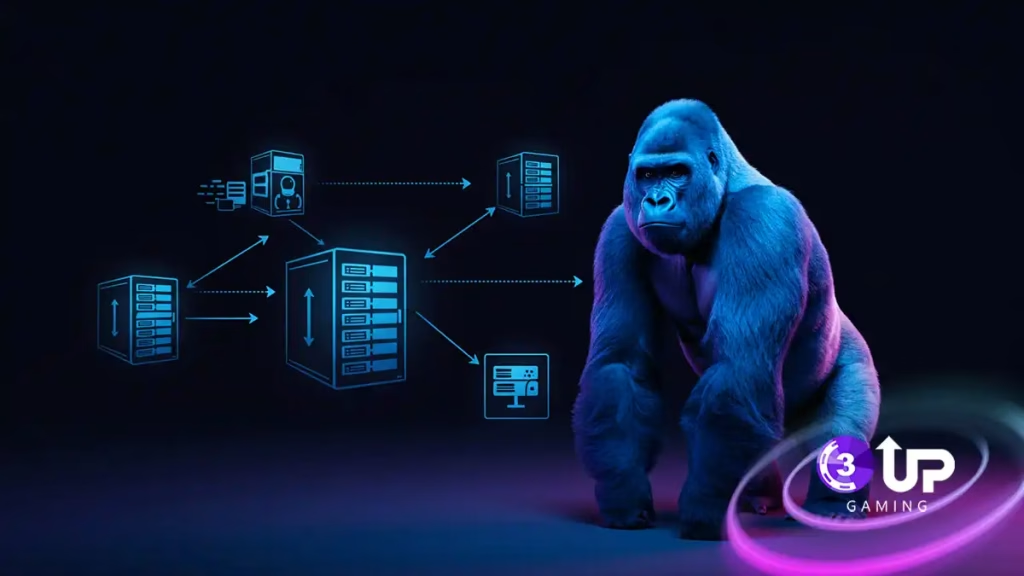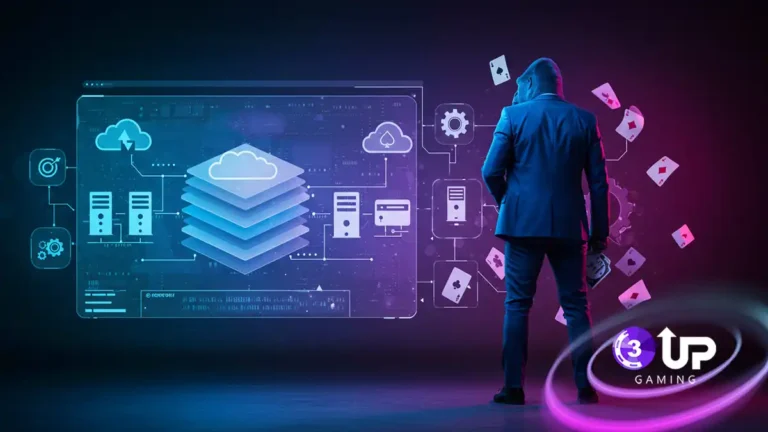Building Scalable Poker Platforms: Software Architecture Guide! In today’s competitive iGaming market, providing a scalable poker platform solution is no longer a luxury, it has become a necessity. And as the users increase and gameplay becomes larger, your poker software platform must handle the increased traffic without compromising speed, fairness, or stability.
It’s smart poker software architecture that makes this possible. From cloud poker hosting to microservices-based scalable poker platforms, leading developers are using increasingly flexible, modular systems to deliver high performance at every hour of the day.
Whether you’re launching a real-money poker app or a free-play environment, real-time poker software must be built with a poker software platform.
In this guide here, we will break down the large pieces of a scalable poker software design. We’ll also talk about different infrastructure choices and illustrate tools and techniques top providers use to be performance in control, compliance in check, and enhance the player experience.
Why Scalability Matters in Online Poker Sites
When you run an online poker site, the biggest challenge is expansion. If your poker software is not scalable from the start, you’ll have performance issues in no time. A scalable poker platform lets your poker application support thousands — or millions — of concurrent users without decelerating or crashing.
Real-Time Demands of Poker
Poker is a real-time game. Every action must be replicated immediately across players and devices. That means your real-time poker software infrastructure must be planned for rapid event processing.
Glitches or slowdowns can ruin player experience and damage your reputation- especially on a competitive online poker platform.
Preparing for Growth
Scalability is not only about accommodating more players — it’s about preparing for tournaments, holiday weekends, and viral expansions.
Implementing cloud poker hosting or modular poker software architecture makes it simple to scale resources dynamically and efficiently as needed.
Future-Proofing Your Business
A scalable poker software architecture is an investment. It enables you to grow without completely overhauling your system. It improves performance, security, and player trust — all of which are critical to long-term success in the online poker landscape.
Critical Aspects of a Scalable Poker Software Architecture
A scalable poker platform starts with good architecture and a modular design. Without appropriate architecture, it is not possible to meet the high expectations of today’s gamblers — especially when the action heats up.
Modular Backend Services
A well-structured scalable poker platform architecture is built on modular, independently functioning components. This includes separate services for table management, player matchmaking, payment processing, user authentication, and real-time communication.
Each of these modules can be scaled individually based on traffic and demand, which ensures flexibility and smooth performance during peak times.
Cloud-Native Design
Cloud hosting is no longer an option — it’s mandatory. Cloud hosting poker software platforms offer dynamic resource allocation, auto-scale, and global reachability. It reduces latency as well by hosting servers close to players.
Real-Time Communication Layer
Robust real-time engine forms the foundation of real-time real-time poker solutions. WebSockets and gRPC technology supports instant game updates, chat, and live actions on devices without compromising smooth gameplay even with thousands of simultaneous players.
Centralized Game Logic
Core game logic must be centralized and stateless in order to scale horizontally without worrying about conflicts or duplicate actions. This is key for building a truly robust poker engine.
Choosing the Right Infrastructure for Poker Scale

For developing large scale poker platforms, cloud vs on-premise hosting must be the biggest decision. All of them have their strong suits — but in the fast-paced digital world of today, cloud solutions are leading the way.
Poker Software at Cloud-based Locations
One of the previously mentioned options for hosting that can be too tight or too looser for your business is “Cloud hosting”.
Major scalable poker platform developers are now using subscription cloud service such as AWS or Google Cloud in order to guarantee 24/7, quick deployment, and worldwide deployment.
Resources scale with traffic automatically and downtime is virtually zero. It’s ideal for scaling platforms when user demand can surprise you at any time.
Hosting On-Premise: Vintage Control
I’ve been around since the beginning of time (okay, Wolfenstein 3D and Duke Nukem Forever days), so sure — the more control you like to have over your server directly, the better on-premise solution for you.
On-premise hosting provides you with full control of your servers and your data — but at a cost. It comes with a heavy upfront investment in hardware, security, and IT personnel.
Scaling is currently slow and manual, which may become a bottleneck for a real-time poker solution aiming for real-time game playing and platform expansion.
The Verdict
The most intelligent, scalable, and cost effective option for most modern scalable gaming backends online today is cloud infrastructure – especially if you are targeting for global reach and peak performance.
Microservices Architecture for Real-Time Poker Platforms
Microservices transformed the development, deployment, and maintenance of scalable poker platforms. Instead of one gigantic monolith, microservices divided the poker platform into separate, smaller chunks — each one performing a single task.
What Are Microservices in Poker Software?
In real-time poker solutions, microservices would be applicable to handle table conduct, player accounts, money transactions, chat in the game, hand history, and game state in real-time — each as separate services.
With such a setup, each service could be individually deployed, modified, or scaled without affecting the others.
Benefits of Microservices for Real-Time Gaming
One of the major advantages is fault isolation. If one service collapses, other services in the platform do not get affected. It also speeds up the process of development as teams can work on different elements independently.
In scalable poker platforms where milliseconds matter, this architecture delivers smoother execution and fewer latency issues.
Scaling Poker Features Seamlessly
Microservices constitute the basis of horizontal scalability. If matchmaking traffic is high, you scale only the microservice. If payment traffic is high, only that module gets more resources — making real-time poker solutions flexible, and efficient.
Load Balancing and Server Selection Algorithms

When poker infrastructure goes down, it’s very important to be able to distribute players.. that multi-players have a stable, responsive, and fair place to play! This is where load balancing and smart server positioning factor in.
What is poker server load balancing?
Load balance on scalable gaming backends is when your traffic comes in and it goes to multiple servers.
A load balancer is used when you get a high volume of users logging in, remaining seated at the tables, or cashing out all at once, to prevent any one server from being overloaded. This maintains game performance and avoids downtime.
Distributed Poker Architecture
Leading scalable poker platform vendors employ geographically distributed servers. This reduces delay for users all over the globe. For instance, EU users can be directed to EU servers and Asian users get connected to regional data centers — better experience.
Real-Time Gaming Performance at Scale
With load balancers and intelligent server assignment added in, a poker infrastructure can support large amounts of players in real-time.
It also introduces redundancy: when a server crashes, traffic is routed instantly to an active node, keeping games alive and healthy without disruption.
Database Optimization in Support of Quick Player Match-up and Game State
In a world of high-velocity scalable poker applications, every second counts. As a result, poker applications need a well-designed database that can enable real-time gaming and process player data accurately.
The Importance of Database Speed in Poker
An optimised database greatly supports the fast search for players by matching user profiles, skill-levels and or preferred tables. No matter if it’s Texas Hold’em or Omaha, fast data response is perfect for the match for the players without any lag.
Handling Real-Time Game State
Poker games require constant state changes — dealing cards, making bets, tossing chips. A slow database will freeze you in the game or put players out of sync with each other.
To avoid that, devs prefer in-memory databases, like Redis or Memcached for the real-time action, and long-term storage with a relational one-making the robust poker engine function without interruptions.
Scalable and Resilient Design
To handle thousands of concurrent sessions, the database must scale horizontally. Sharding schemes, indexing, and caching layers are utilized to reduce query time and distribute the load evenly so that the poker infrastructure remains responsive at peak hours.
Handling High Traffic and Peak Loads with Success
Elastic scalable poker platforms must be capable of handling the spikes in user activity—whether tournaments, promotions, or at the high end of evening traffic.
Traffic Forecasting and Elastic Scaling
Traffic prediction is the initial move towards managing high traffic. Player activity and usage can be tracked using analytical software.
Once the traffic spike has been predicted, cloud-based scalable poker applications have the ability to automatically scale resources—investing in computing resources or servers as needed. This elasticity makes everything run seamlessly without needing manual intervention.
Queue Management and Rate Limiting
Therefore, to avoid overloading backend systems, there are smart queue management systems. There are also game request prioritization and load prioritization. There is rate limiting that protects the robust poker engine against abuse or bot attack that could drain resources.
Failover and Redundancy Planning
Popular scalable poker platforms must contain backup measures. Back-up mechanisms and duplicate servers become active when a part of the network disconnects so that the website runs smoothly without any interruption.This makes poker games possible continuously even in situations of heavy loads.
Scalable Architecture with Security and Compliance
In the development of a poker infrastructure security and the correctness cannot taken lightly. A poker software solution provider also has the responsibility to ensure that the infrastructure is constructed to protect player information, money, and prevent game integrity from compromised.
Encrypting data with strong encryption techniques, authenticating users securely, and monitoring datasets in real time for anomalous activity are all part of this process.
Regulatory Compliance
Scalable poker applications must comply with relevant laws and regulations in different jurisdictions.
A reliable poker software development company integrates compliance features in the platform to support regulatory licensing processes, anti-money laundering (AML), and responsible gaming. This renders the platform legal and wins players’ trust.
Continuous Security Updates
Security isn’t something that happens it is something that you do. Scalable gaming backend allows developers to deploy new content in stages, rather than all at once, including no-impact updates and patches that simply lock out new threats without interrupting play.This ensures the platform remains secure as its size increases.
With an emphasis on these facets, developers are able to provide robust poker engines that are secure and reliable – as well as player-trusted across the globe.
Smooth Player Access; Cross-Platform Compatibility
Scalable poker platforms of today must have cross platform support. Players need to be able to hop in and play their favorite games effortlessly on their computers, tablets, and phones. Good poker software structure works with all major OS systems (windows, mac, linux and mobile (android, iOS)).
Web apps vs. Native apps
Leading scalable gaming backend vendors employ responsive web design and native application creation at their best to provide smooth gaming solutions.
Responsive design makes the user interface to respond according to the size of the screen, and native apps perform better and can directly interact with device features like notifications and offline support.
Synchronization Across Devices
Players prefer switching between devices during sessions. Scalable poker applications have real-time synchronization of player data and game state on all the devices. It is this free access that enhances user experience and retention.
Focus on cross-platform compatibility makes sure players can play poker anytime, anywhere, enhancing platform usage and expansion.
Tools for Monitoring, Analytics and Performance Tuning

Good monitoring and good analytics is the secret to success if you like it or not (if what you like is to have a poker software platform). One keeps an eye on server health, player activity, and quality of the game to ensure that nothing is negatively impacting players.
Real-Time Monitoring
Real-time observation utilities send you instant alerts when your servers are becoming overloaded, latencies are rising or security has been compromised. Such anticipatory actions maintain gameplay without breaks and minimize downtime in the case of peak traffic.
Analytics for User Behavior
Analytics platforms record details of player activity, gaming popularity, and session length. Programmers utilize this data to tweak the software and build targeted promotions to spur user action.
Performance Tuning
Regular performance tuning from analytics improves load time, matchmaking rate, and overall stability. By leveraging these tools, poker platforms can scale reliably and deliver an excellent user experience.
FAQ: Building Scalable Poker Platforms
1. What makes a poker platform scalable?
A scalable poker platform is built with modular architecture, cloud infrastructure, and load balancing to handle increasing users and traffic without sacrificing performance or speed.
2. Can I scale my poker site as user numbers grow?
Yes. With cloud-based services, microservices, and elastic server allocation, your platform can grow seamlessly as traffic and demand increase over time.
3. Do I need to go with a cloud provider or host the server myself?
Flexibility, auto-scaling, global reach, all of this cloud providers does best—best fit for many of the platforms. On-premise provides control but is more difficult and expensive to scale.
4. How are game data handled in realtime at scale?
Game data is handled through real-time engines like WebSockets and gRPC, facilitated by fast databases as well as centralized logic, so that everything stays fast and accurate even at scale.
5. What is the role of microservices in poker software?
Microservices break the software into independent units—like game logic, payments, and user management—making it easier to scale, update, and maintain without downtime.


